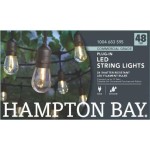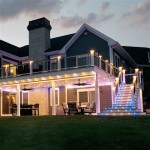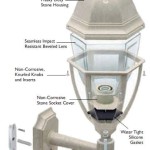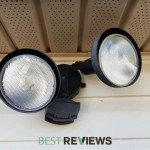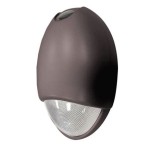Illuminating Your Outdoor Spaces: A Guide to Outdoor and Garden Lighting
Outdoor and garden lighting extends the usability and enjoyment of exterior spaces beyond daylight hours. Strategic illumination enhances aesthetics, improves safety, and increases security. Selecting the appropriate lighting fixtures and implementing a well-designed plan are crucial for achieving the desired ambiance and functionality.
This article explores key considerations for choosing and installing outdoor and garden lighting, encompassing various types of fixtures, design principles, and practical tips for creating a captivating and secure environment.
Understanding the Purpose of Outdoor Lighting
The initial step in planning outdoor lighting is defining its primary purpose. Different objectives necessitate different lighting solutions. Commonly, outdoor lighting serves one or more of the following purposes:
Safety and Security: This involves illuminating pathways, steps, and entrances to prevent accidents and deter intruders. Bright, uniform lighting is typically preferred in these areas. Security lighting often incorporates motion sensors for added effectiveness.
Aesthetic Enhancement: This focuses on highlighting architectural features, landscaping, and water features to create visual appeal and enhance the overall ambiance of the outdoor space. Subtler lighting techniques, such as uplighting and spotlighting, are often employed.
Functionality: This addresses specific needs, such as providing light for outdoor dining, grilling, or other activities. Task lighting, which delivers focused illumination, is essential for these purposes.
Wayfinding: This involves using lighting to guide people through the outdoor space, particularly along pathways and driveways. Low-level lighting, such as path lights, is commonly used for this purpose.
Careful consideration of these purposes will guide the selection of appropriate fixtures, their placement, and the overall lighting design.
Types of Outdoor Lighting Fixtures
A wide array of lighting fixtures are available for outdoor use, each designed for specific applications and offering distinct aesthetic qualities.
Path Lights: These low-level lights are designed to illuminate walkways, driveways, and garden paths. They typically feature a downward-facing light source to minimize glare and direct the light onto the path surface. Options include solar-powered models, low-voltage systems, and line-voltage fixtures.
Spotlights: Spotlights are used to highlight specific features, such as trees, shrubs, architectural details, or sculptures. They provide focused beams of light that accentuate textures and create dramatic effects. Adjustable spotlights allow for precise aiming.
Floodlights: Floodlights provide broad, diffuse illumination over a wide area. They are commonly used for security lighting, illuminating large yards, or lighting up entire building facades. Floodlights are available in various wattages and beam angles.
Wall Lights: Wall lights are mounted on exterior walls to provide general illumination, accent lighting, or security lighting. They come in a variety of styles, from traditional lanterns to modern sconces. Uplights and downlights are two common configurations.
Deck Lights: These low-profile lights are designed to be integrated into decks, patios, and steps. They provide subtle illumination for safety and create a warm ambiance. Deck lights are typically LED-based and available in various colors.
String Lights: String lights, also known as fairy lights or bistro lights, add a festive and whimsical touch to outdoor spaces. They are commonly used to decorate patios, pergolas, and trees. String lights are available in various lengths, bulb styles, and colors. Opt for weather-resistant options specifically designed for outdoor use.
Underwater Lights: These lights are designed to be submerged in water features, such as ponds, fountains, and swimming pools. They create dramatic effects and highlight the beauty of the water. Underwater lights must be specifically rated for underwater use and installed according to safety regulations.
Post Lights: Post lights are mounted on posts or pillars to provide general illumination and add architectural interest. They are commonly used to light driveways, walkways, and entrances. Post lights are available in various styles, from traditional to contemporary.
Landscape Lighting Kits: These kits provide a complete package of lighting fixtures, wiring, and transformers, making it easier to install a comprehensive outdoor lighting system. They are particularly suitable for smaller properties or for homeowners who prefer a streamlined approach.
Design Principles for Effective Outdoor Lighting
Beyond selecting the right fixtures, effective outdoor lighting requires careful planning and design. Consider the following principles to create a harmonious and functional lighting scheme.
Layered Lighting: Employ a layered approach by combining different types of lighting fixtures to create depth and visual interest. Combine ambient lighting (general illumination), task lighting (focused light for specific activities), and accent lighting (highlighting specific features) to achieve a well-balanced effect.
Color Temperature: The color temperature of light, measured in Kelvin (K), affects the mood and ambiance of the outdoor space. Warmer light (lower Kelvin values, such as 2700K to 3000K) creates a cozy and inviting atmosphere, while cooler light (higher Kelvin values, such as 4000K to 5000K) provides brighter, more functional illumination. Choose color temperatures that complement the architectural style and landscaping.
Light Placement: Strategic placement of fixtures is essential for achieving the desired effect. Consider the angle of the light, the direction it is shining, and the surrounding environment. Avoid placing lights in areas where they will cause glare or light pollution.
Light Trespass: Minimize light trespass by using shielded fixtures that direct light downward and prevent it from shining into neighbors' windows or polluting the night sky. Dark-sky-compliant fixtures are designed to reduce light pollution and conserve energy.
Energy Efficiency: Opt for energy-efficient lighting technologies, such as LED (light-emitting diode) fixtures. LEDs consume significantly less energy than traditional incandescent or halogen bulbs and have a much longer lifespan. Solar-powered lights are another energy-efficient option, particularly for path lighting and accent lighting.
Automation and Controls: Consider incorporating timers, motion sensors, and dimmers to control outdoor lighting automatically. Timers can turn lights on and off at specific times, while motion sensors activate lights only when needed, saving energy and enhancing security. Dimmers allow for adjusting the brightness of the lights to create different moods and conserve energy.
Weather Resistance: Ensure that all outdoor lighting fixtures are specifically designed for outdoor use and are rated for the appropriate weather conditions. Look for fixtures with a high IP (Ingress Protection) rating, which indicates the level of protection against water and dust.
Safety Considerations: Follow all electrical codes and safety regulations when installing outdoor lighting. If unsure, consult with a qualified electrician. Use ground fault circuit interrupters (GFCIs) to protect against electrical shock in damp or wet locations. Bury underground wiring at the appropriate depth.
By adhering to these design principles, a functional and aesthetically pleasing outdoor lighting scheme can be implemented to enhance any property.
Implementing a well-thought-out outdoor lighting plan significantly improves the usefulness, beauty, and safety of outdoor spaces. Selecting the proper lighting fixtures, carefully considering design elements, and following safety guidelines are essential for creating an outside setting that is both visually appealing and practical. Continued maintenance and adjustments will ensure the lighting system continues to perform optimally and contributes to the enjoyment of the outdoor environment for years to come.

Garden Lights Outdoor Lighting Centre Tagged Kent

Garden Lights Outdoor Lighting Centre Tagged

4 X Outdoor Lighting Ideas For Your Home And Garden Taverham Nursery Centre Norwich
About Us Outdoor Lighting Garden Centre

Shine On The Complete Guide To Planning Your Outdoor Lighting Canberra Times Act

50 Garden Lights Ideas And Designer Fixtures For Your Outdoor Space

Garden Lighting Ransoms Centre

Shine On The Complete Guide To Planning Your Outdoor Lighting Canberra Times Act

Your Guide To Functional Fabulous Outdoor Lighting

How To Light Up Your Garden With Solar Lights Indoor Outdoor Lighting Guides Resources Centre
Related Posts
